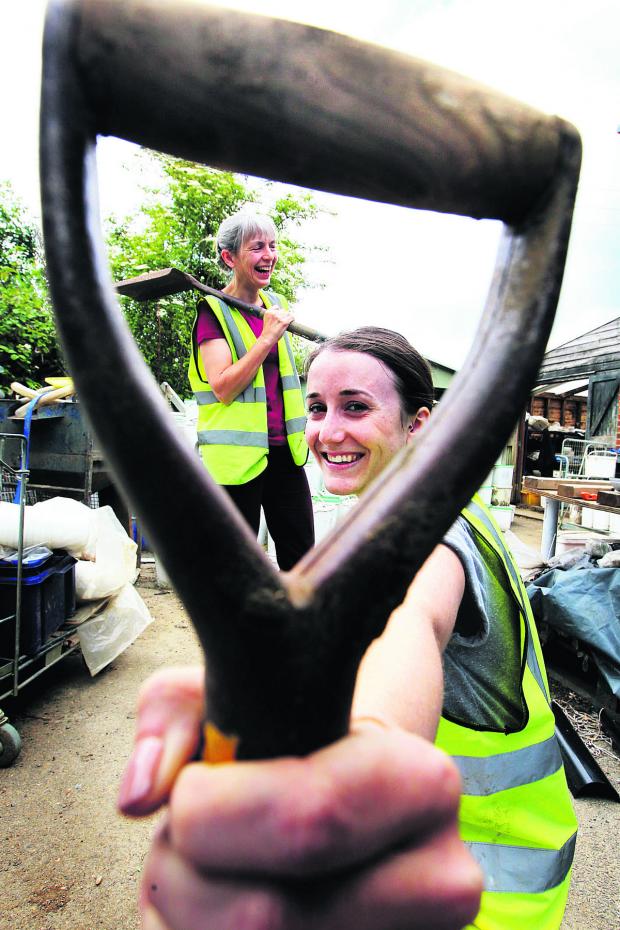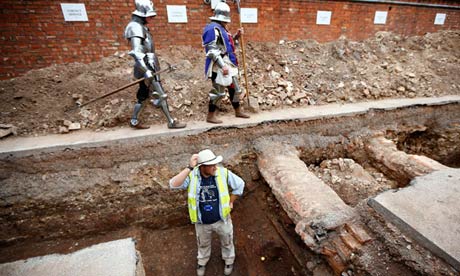Ralph Agas' panorama of Oxford showing the outline of the foundations for Wolsey's chapel which would have completed the north side of Tom Quad
Regular attendees to the Oxford Experience may
remember a few years ago when Peckwater Quad was cut about with deep trenches
for new services. Naturally, when
anyone digs in an area as important as Christ Church, there has to be an
archaeological investigation.
The Magazine "Current Archaeology" has
just published a short article on the results of excavations that took place
within Christ Church over the last ten years.
The excavations produced some impressive results:
burials from the minster church of St
Frideswide (now the cathedral); a
garderobe, or latrine to the west of the church which was probably there for
pilgrims visiting the tomb of St Frideswide; evidence of medieval streets that
disappeared as the college expanded; foundations from some of the halls that
served as halls of residence for the medieval students
and evidence of Cardinal Wolsey's original plans for
the college, that were changed when Henry VIII took charge.
The finds from these
excavations give an interesting glimpse of studies at the medieval university,
including an as yet unidentified scientific instrument, and a large collection
of glass and pottery from distilling implements. This is the earliest find of such objects in Britain, dating to
the mid-14th century, and it is also the second largest of such finds.
Some of this pottery and
glassware had been subjected to intense heat and the internal glaze had been
partly corroded by strongly acidic or corrosive substances, suggesting that
they may have been used in the pursuit of the study of alchemy.
You can find out more about this issue of Current archaeology here...
The garderobe, or latrine west of the church
Foundations of one of the medieval halls of residence
Drawing of the unknown scientific instrument and what is possibly a set of scales
Some of the medieval glassware
Some of the medieval pottery
Images from Current Archaeology





























 Cave paintings, castles and pyramids, Neanderthals, Romans and Vikings - archaeology is about the excitement of discovery, finding out about our ancestors, exploring landscape through time, piecing together puzzles of the past from material remains.
Cave paintings, castles and pyramids, Neanderthals, Romans and Vikings - archaeology is about the excitement of discovery, finding out about our ancestors, exploring landscape through time, piecing together puzzles of the past from material remains.








 . The University of Leicester, which is overseeing the excavation and analysis of the remains, has jurisdiction over the remains, but various societies dedicated to the king have their own opinions.
. The University of Leicester, which is overseeing the excavation and analysis of the remains, has jurisdiction over the remains, but various societies dedicated to the king have their own opinions.